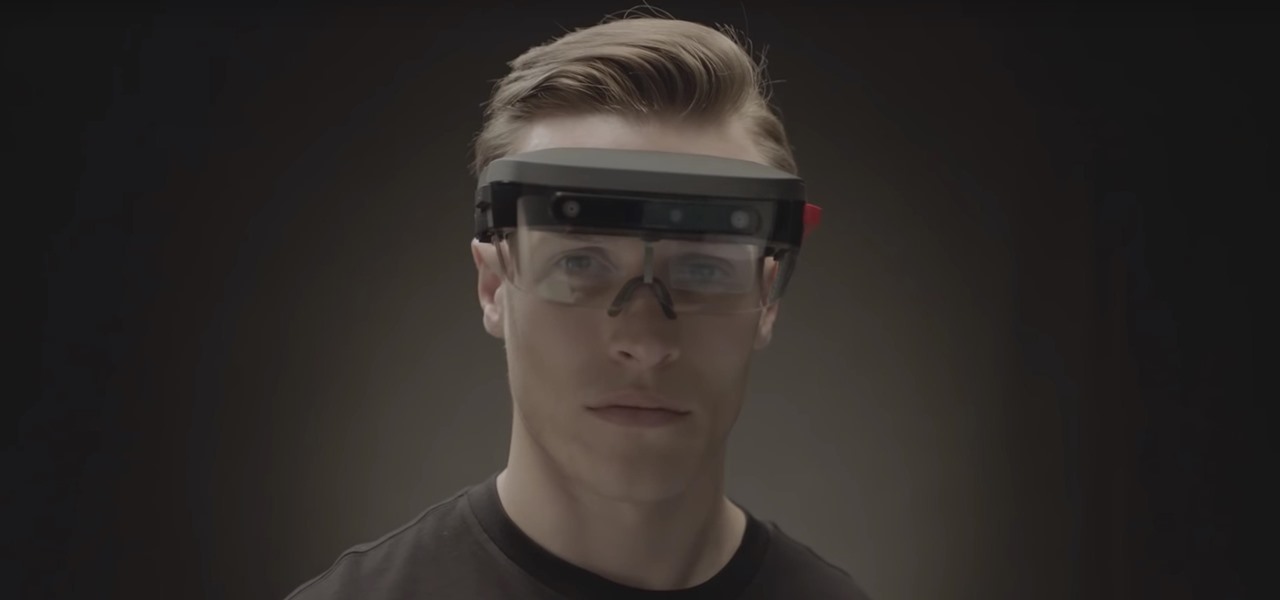Now that Microsoft has squarely focused on the enterprise market with the HoloLens 2, it appears Lenovo is content to play follow-the-leader with its new augmented reality headset.
On May 13 at its Accelerate conference in Orlando, Florida, Lenovo unveiled the ThinkReality platform, which includes an enterprise-focused augmented reality headset — which actually borrows quite a few design cues from the HoloLens 2 — along connected devices, sensors, and a development platform that gives businesses the tools to create augmented reality apps for the headset.

Apps built on the ThinkReality platform can display digital content in the user's environment, enabling them to keep their hands free for the task at hand. The apps can also work across multiple operating systems, and the platform can also integrate into various cloud services, such as Amazon Web Services or Microsoft Azure's platform. In other words, Microsoft Azure cloud customers could conceivably opt to deploy the Lenovo's headset and sensors instead of (or alongside) HoloLens and Azure Kinect sensors.
"More than ever, customers want to connect the physical world to the digital world and to implement IoT and AI solutions to enable business transformations. Working with trusted partners who can provide infrastructure and services that simplify IoT is critical," said Sam George, director of Azure Internet of Things at Microsoft Corp. in the Lenovo announcement. "Our new IoT partnership with Lenovo brings together Microsoft Azure platform and Lenovo's ThinkIoT solutions portfolio of hardware, software, and services to dramatically accelerate time to value for our joint customers."
Also, the headset runs on Android Oreo rather than Windows, which opens the device up to a broad ecosystem of mobile app developers.
The design of the ThinkReality A6 owes a great debt to the HoloLens 2, but it is a different machine under the hood. While the headset packs a 6800 mAh battery, Lenovo has offloaded processing to a tethered computer rather than embedding them into the headset (and the bright red cable with white-lettered Lenovo logo does allow an opportunity to differentiate the look a bit).
Since Lenovo is going with the tethered headset approach, it makes sense that the headset will run on the Qualcomm Snapdragon 845 XR mobile platform, which enables headset makers to either run their hardware on wearable computer packs or smartphones (as is the case with Nreal Light). By comparison, the HoloLens 2 packs a Snapdragon 850, which caters to Windows 10.
Otherwise, the ThinkReality A6 contains the sensors (RGB camera, depth sensor, inertial measurement unit, microphones, and speakers) and the visual processing unit to support voice and gesture input, environment tracking, and eye gaze/head tracking (though the headset also includes a three degree of freedom hand-held controller to supplement those capabilities).
The sum result of tethered computer and the components contained in the headset is that the ThinkReality A6 weighs in a bit slimmer at 380 grams versus the HoloLens 2, which measures in at 566 grams. The difference is roughly the weight of a 180-gram vinyl record.
From the optics angle, Lenovo reaches 1080p resolution, compared to the 2k resolution that HoloLens 2 achieves. The ThinkReality A6 also offers a 40-degree diagonal field of view, a step down from the 52-degree diagonal field of view of the HoloLens 2.
The ThinkReality A6 will feature waveguide displays from Lumus, who struck licensing deal with original design manufacturer Quanta, a Lenovo supplier, in Dec. 2017. At the time of that deal, Lumus said that wearables featuring its waveguides would hit the market in "12 to 18 months." Considering that Lenovo estimates a "limited release" of the ThinkReality A6 in third quarter 2019 (read: low volume of units), it appears Lumus was reasonably close to the pin on its prognostication.
Lenovo did not reveal a price, but the company did note that the headset would be available as a developer program to enterprise customers.

Lenovo isn't a stranger to building AR headsets. The company has introduced several smartglasses models that only enterprises could love, partnered with Wikitude to establish an AR platform for businesses, and the company has served as the hardware partner for the Star Wars: Jedi Challenges AR game set.
With a considerable amount of institutional experience with AR headsets, it's curious that Lenovo's latest effort looks so similar to the HoloLens 2. Nonetheless, Lenovo's varied approach to the hardware, components, and the cross-platform software ecosystem make its latest headset a compelling option for enterprise customers.
Just updated your iPhone? You'll find new features for Podcasts, News, Books, and TV, as well as important security improvements and fresh wallpapers. Find out what's new and changed on your iPhone with the iOS 17.5 update.























Be the First to Comment
Share Your Thoughts